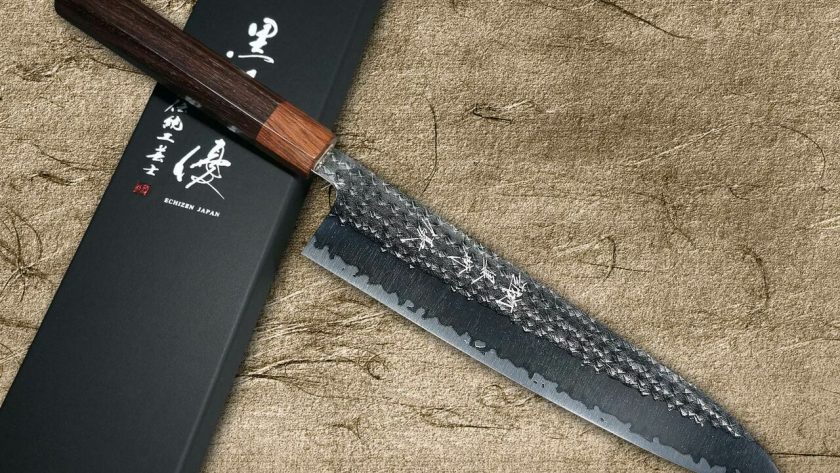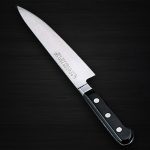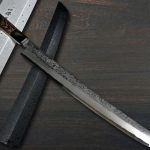When it comes to Japanese knives, it can’t be denied that Yu Kurosaki is among the top, leading knife manufacturing companies that hand-craft their blades with uniqueness, creativity, and the passion to go miles when it comes to success. Yu Kurosaki is one of Japan’s most talent blacksmiths, famously known for his unique blade designs. He is based in the famous knifemaking city Echizen, located in the Fukui Prefecture, and is the youngest blacksmith ever to receive the title of Master Blacksmith, awarded to him by the Japanese government for upholding traditional crafting techniques. Kurosaki’s knives not only feature amazing designs, but they’re also incredibly practical and make great chef knives. The knives feature some of the best traditional Japanese forging techniques you’ll find today, and today, we’ll review one of his creations, the Shizuku Gyuto-SG2/R2.
The Yu Kurosaki Shizuku Gyuto features a SG2, also known as R2 core material, and comes with a softer, outer stainless-steel cladding. The cladding adds to the aesthetic of the knife and is very visible. The blade features a chiseled hammered finish as well as a brushed vertical finish above the knife profile. This prevents food sticking to the blade as it helps break down water content. The handle is a half-tang octagonal rosewood handle and is partially glued onto the blade.
Rockwell Hardness and Core Material
The Shizuku Gyuto-SG2/R2 features a Rockwell hardness of 63. For normal everyday use at home, you can get approximately 8 to 9 months of use before needing a whetstone resharpen. As the knife is a SG2, also known as R2 powdered steel, it features excellent rust and corrosion-resistance. This knife, like most Japanese knives with high Rockwell hardness, features sharpness over durability. This is why a cladding is added, so the blade is protected from potential damage and possibly breaking. As the knife’s design prioritizes sharpness over durability, it’s important to keep in mind that certain activities should not be performed to ensure the blade functions the way it should. This knife should not be used to slice through bones, cheese, hard bread, frozen food, or be forced through other food such as chocolate or nuts. Also do not twist or pry open food with the knife as that may cause chipping.
Blade Aesthetic and Food Release
The knife features an artistic pattern which helps prevent food from sticking onto the blade. There are also deep vertical scratch lines, which combined with a rough polish, helps break down water content so that the food has less resistance to your cut, further preventing the food from clinging onto your blade. As you make cuts, the food would slide off the blade, onto the table or cutting board.
Blade Profile
The Shizuki Gyuto SG2/R2 maintains a straight blade with a gentle curve at the front. The heel of the knife has a slight curve which helps to prevent any hard stops which can damage the blade.
Knife balance point
The balance point on this knife as right in front of the chiseled Kanji. Depending on how you grip the knife, the knife’s balance point will shift. If you pinch grip the knife around the neck area, then the knife is considered front heavy, whereas if you grip at the blade or in front of the chiseled Kanji, then the knife is middle balanced. One thing to keep in mind is that you shift your middle fingers toward the choil by doing so. The choil area was rounded by Kurosaki and features more of a polish to decrease any discomfort you might experience if you grip the knife further in front of the chiseled Kanji.
There is still more to be discussed, so in Part 2 of our Shizuku Gyuto SG2/R2 review, we’ll continue looking into more of the knives many features.



